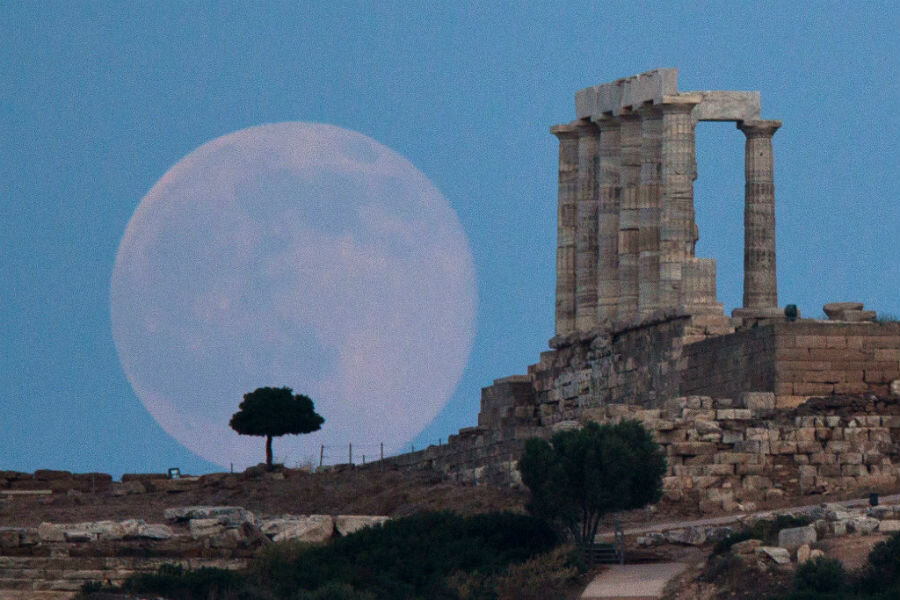Just how old is the moon? Older than we thought, say scientists.
Loading...
How old is the moon?
Surprisingly, that question has proven to be a difficult one to answer. The hypothesized initial impact that created Earth's satellite must have occurred billions of years ago, but estimates as to precisely when have varied by hundreds of millions of years.
Now, a team of researchers think they can nail down a more precise age for the moon, based on a new analysis of minerals present in moon rocks gathered by Apollo astronauts more than four decades ago. According to their new study, the moon is 4.51 billion years old, older than most currently accepted estimates. If they are correct, the moon would have formed just 60 million years after the rest of the solar system, give or take about 10 million years.
The new study, published in the journal Science Advances, is based on moon rock samples collected in February 1971 by the Apollo 14 lunar mission. These rocks have been studied extensively for decades, so the team did not expect to make any Earth-shattering (moon-shattering?) discoveries when they set out to determine the age of tiny minerals hidden in the rocks.
"It would be more a double-checking than anything else," lead author of the study Mélanie Barboni told the Associated Press.
But these old rocks still had a few new tricks. Dr. Barboni's team, from the University of California in Los Angeles (UCLA), conducted a different kind of analysis: an age-based study of zircon, a remarkably durable mineral found in the Earth's crust and in moon rocks.
"Zircons are nature's best clocks," said co-author Kevin McKeegan, a UCLA professor of geochemistry and cosmochemistry, in a statement from UCLA. "They are the best mineral in preserving geological history and revealing where they originated."
Most rocks the Apollo astronauts brought back are breccias, composites of older rocks that have been cemented together, usually by meteor strikes. Because the component pieces may be of varying ages, breccias pose a challenge to age dating techniques. But this time, Barboni and her colleagues focused on just the tiny zircon crystals, which contain small amounts of radioactive elements.
By examining the level of uranium that had turned to lead and the level of lutetium that had decayed to hafniumin, the researchers could calculate how long ago the zircon originally formed.
The generally accepted hypothesis of the moon's formation is that a planet-sized object, sometimes referred to as Theia, smashed into the Earth in the early days of the solar system. The collision would have thrown a huge amount of magma into orbit around the Earth, which later solidified into the moon. Zircon would have been one of the first minerals to harden out of the magma as it cooled.
"Mélanie was very clever in figuring out the moon's real age dates back to its pre-history before it solidified, not to its solidification,” said Edward Young, study co-author, in the UCLA statement.
But Richard Carlson, the director for the department of terrestrial magnetism at Carnegie Institution for Science, has expressed some doubts about certain base assumptions about the proportions of lutetium and hafnium in the early solar system that could affect the accuracy of the team's age estimate, if their assumptions turned out to be incorrect. He also expressed a concern about the accuracy of the zircon-dissolution technique used in the study, though he did say that overall, Barboni's team had done good work.
"The new data is a huge advance in precision over previous similar work," Dr. Carlson told The Verge. "My concerns are those from someone familiar with the subject and approach."
But while there may still be some scientific vetting still to be done, the research team itself remains confident in their 4.51 billion year estimate.
"We have finally pinned down a minimum age for the moon," Barboni said in the UCLA statement. "It's time we knew its age and now we do."
This article contains material from the Associated Press.








